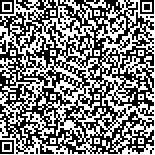下载中心
优秀审稿专家
优秀论文
相关链接
摘要

利用遥感数据估算和监测地表能量平衡的研究和应用一直以来都是学术探索的前沿和焦点,目前针对国际主流卫星数据(如MODIS,Landsat TM等)的算法研究有很多,且在不同的尺度上发展了一系列遥感技术和应用方法。本文以环境一号卫星(HJ-1)数据为主要数据源,研究和分析了地表能量平衡遥感估算方法。在下行短波和长波辐射,以及地表净辐射估算的基础上,重点研究了地表显热和潜热通量(蒸散)的估算方法,针对辐射温度代替空气动力学温度所引起的误差校正,对比分析了基于KB-1系数的热力学粗糙度长度,以及附加阻抗两种方法。使用2010年HJ-1B数据反演得到海河流域地表能量平衡各分量瞬时值,利用3个地面站点的测量数据对反演结果进行验证和误差分析。结果表明下行短波辐射的反演误差是地表净辐射反演误差的主要来源,地表温度的反演精度以及地表粗糙度的模拟精度是影响显热通量反演精度的主要因素。利用两种方法估算的显热通量趋势基本一致,但KB-1系数法的反演结果一般低于附加阻抗法。在下垫面较为复杂的区域,模型结果误差较大,需要更加精细的模型以刻画地表非均匀性的影响。
Estimation of land surface energy balance has become increasingly important in science research and application. Remote sensing has long been identified as a technology capable of monitoring land surface energy, such as Landsat and Moderate-resolution imaging spectroradiometer. This study introduced and discussed algorithms that use HJ-1 satellite data to estimate the energy budget of land surface including downward shortwave and longwave radiation, surface net radiation, and sensible and latent heat fluxes. Considering the error caused by using radiative surface temperature instead of aerodynamic surface temperature in the one-layer model for sensible heat flux estimation, we compared and analyzed two correction methods, the KB-1 coefficient method and the external resistance method. The surface energy balance components of Haihe River Basin were estimated by HJ-1B satellite data in 2010, and the results were validated by in suit measurements of the three sites. Error analysis indicates that the accuracy of the estimated net radiation is influenced by the uncertainties of input parameters, particularly downward shortwave radiation. The error of the sensible heat flux estimation is mainly caused by the errors in the retrieved surface temperature and roughness length. The results of the KB-1 coefficient method and external resistance method are similar, and the sensible heat flux estimated by the KB-1 coefficient method is usually smaller than that by the other method. Significant errors can be found under complex surfaces, indicating that surface heterogeneity should be considered under such conditions to accurately estimate surface heat fluxes.

